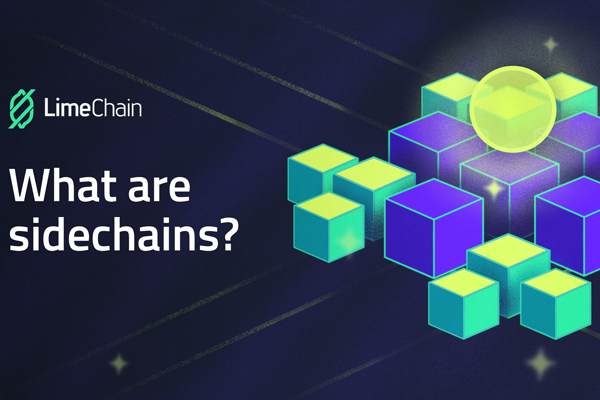What is a sidechain? What are the advantages of a sidechain?

With the widespread application of blockchain technology, the main chain faces the challenge of increasing processing pressure. In order to improve the scalability and availability of blockchain, sidechain technology came into being. Through an architecture independent of the main chain, the side chain realizes the secure transfer of assets and the richness and diversity of the blockchain ecosystem. This article will explore the definition, working mechanism, technical advantages, practical applications of the side chain and its important role in the development of blockchain technology.
Introduction
With the popularization of blockchain technology, the explosive growth of decentralized applications (DApps), decentralized finance (DeFi) and various digital assets has led to huge processing pressure on the blockchain network. Therefore, improving the scalability and availability of the main chain (such as Bitcoin and Ethereum blockchain main chain) has become a top priority. As an effective expansion solution, the side chain came into being.
A side chain is an independent blockchain with an independent architecture and security system, which is connected to the main chain through a two-way anchor. Its main purpose is to help ease the burden of the main chain, introduce more innovations to blockchain technology, and ensure the safe circulation of assets. This article will introduce the concept, working principle, technical implementation and significance of the side chain in the blockchain ecosystem.
Concept and definition of sidechain
A sidechain is an independent blockchain that can be connected to the main chain (usually a large-scale, stable blockchain). Dr. Adam Baker first proposed the concept of sidechain and discussed it in detail in his paper "Using Anchored Sidechains to Achieve Blockchain Innovation". Sidechain aims to enable the free transfer of digital assets or tokens between the main chain and the side chain through a mechanism called two-way anchoring. This means that users can lock a certain number of tokens on the main chain and then create corresponding equivalent tokens on the side chain for various application needs.
The emergence of sidechains enables the main chain to expand to a wider range of application scenarios, relieves the transaction processing pressure of the main chain, and enhances the flexibility and adaptability of blockchain. Transactions on the sidechain do not directly affect the operation of the main chain, and even if the sidechain encounters technical failures or security issues, it will not pose a direct threat to the main chain.
Working principle of sidechain
The implementation of sidechain relies on the two-way anchoring mechanism. This mechanism uses certain technical means to securely transfer assets between the main chain and the sidechain to ensure that assets are not circulated on both chains at the same time. The general process is as follows:
Asset locking: Create a transaction on the main chain to lock a certain amount of assets. This process is equivalent to freezing the tokens until they are circulated on the side chain and finally returned to the main chain.
Asset transfer: Create a transaction on the side chain to prove that the asset has been locked on the main chain. At this time, users can carry out various operations on the side chain with equivalent assets to enhance the liquidity and usage scenarios of the assets.
Asset unlocking: When the user completes the operation on the side chain and wants to return the asset to the main chain, it is necessary to create an unlocking transaction on the side chain again to confirm that the status of the asset has been completed. Through these steps, the side chain can effectively support the circulation of assets on the main chain, allowing users to operate freely on the side chain.
Advantages of side chains
The emergence of side chains has brought many benefits to blockchain, mainly including the following aspects:
1. Scalability
By transferring certain high-frequency and complex transactions to the side chain for processing, the main chain can reduce a lot of transaction pressure, thereby improving the scalability of the system. Side chains can achieve "vertical expansion" of the blockchain system, that is, by adding different side chains to meet different needs. Applications can run on independent side chains, ensuring the efficient operation of the main chain.
2. Flexibility and innovation
Since the side chain has an independent architecture and rules, developers can experiment with various new technologies and protocols on the side chain. In this way, even if there are problems with the new technology running on the side chain, it will not have a negative impact on the main chain. For example, some projects will choose to try a new consensus mechanism or smart contract update function on the side chain, and once successful, apply it to the main chain.
3. Cross-chain communication
With the main network as a relay network, side chains can also communicate with each other. In contrast, sharding schemes usually require tight coupling between chains, while side chains have higher flexibility. In addition, in payment scenarios, side chains can also be used in conjunction with expansion technologies such as payment channels to further enhance the system's payment processing capabilities and transaction efficiency.
4. Privacy and security
Transactions on side chains do not have complete privacy compared to payment channels, but because each side chain is an independent blockchain, its impact on the main chain and other side chains is small. This means that transactions conducted on side chains can be run independently of the main chain to a certain extent, improving the security of assets. At the same time, sidechains provide an experimental platform for decentralized applications. By strengthening technical verification and security protection, the implementation of new protocols and new functions can be made more secure.
Application scenarios of sidechains
In practical applications, sidechains have gradually contributed a lot of value to the blockchain ecosystem, especially in digital asset management and DApps development. The following are typical application scenarios of sidechains:
1. Decentralized Finance (DeFi)
Sidechains can carry decentralized finance (DeFi) applications and greatly improve the processing efficiency of the main chain. DeFi platforms can reduce transaction congestion on the main chain through sidechains and provide users with a smooth operation experience.
2. Games and NFTs
Since game and NFT transactions usually require a large number of small, high-frequency transactions, sidechains provide an ideal environment for them. By processing NFT creation, transfer and other operations on the sidechain, users can get faster feedback and lower handling fees.
3. Cross-border payments and remittances
With the fast processing and low-cost characteristics of sidechains, cross-border payments and remittances become more convenient and efficient. Users can lock tokens on the main chain and then complete payments through the side chain, eliminating the high fees and long waits in cross-border payments.
4. Testing and innovation of smart contracts
Since deploying smart contracts on the main chain requires high fees and high network stability requirements, developers can choose to test new contracts on the side chain and deploy them to the main chain once they are verified.
Challenges and limitations of side chains
Although side chains bring many advantages to blockchain, they are not a perfect solution. In practical applications, side chains also face certain challenges and limitations:
1. High setup costs
Since side chains need to be established and maintained separately, initial setup often requires a lot of capital investment. In addition, the development and testing of side chains also takes a long time, which is a big challenge for development teams with limited resources.
2. Security issues
As an independent blockchain, side chains usually have their own security system. If the network computing power of the side chain is insufficient or the security measures are not in place, it may be vulnerable to attacks. Therefore, a well-designed security mechanism is crucial for the long-term and stable operation of the side chain.
3. Compatibility issues with the main chain
When transferring assets between the side chain and the main chain, some compatibility issues may occur. If there are large differences in the rules of the main chain and the side chain, it may increase the complexity of cross-chain operations, thus affecting the user experience.
Comparison of side chains with other extension technologies
Side chains are a commonly used blockchain extension solution. In addition to side chains, technologies such as sharding and payment channels can also improve the scalability of blockchains. The following is a comparison between side chains and other extension solutions:
Side chains and sharding: Sharding is a solution that divides the blockchain into multiple small blocks, which requires a highly coupled architecture design. Side chains are relatively more independent and flexible. Side chains are suitable for DApps and DeFi, while sharding is more suitable for large-scale on-chain transaction processing.
Side chains and payment channels: Payment channels are off-chain extension solutions, and transactions are usually more private. Users on side chains need to operate online, which is different from payment channels. Payment channels are more suitable for small and frequent payments, while side chains are more suitable for diverse application scenarios.
Sidechain projects worth paying attention to
There are many well-known sidechain projects that have demonstrated the wide application of sidechains in different fields, such as:
Rootstock (RSK): A smart contract sidechain based on the Bitcoin network, focusing on DeFi and smart contract applications.
Ardor: A multi-chain blockchain platform that adopts a main chain-subchain architecture to achieve scalable DApp support.
Loom: A sidechain project focusing on games and social applications, using its expansion characteristics to solve the problem of on-chain congestion.
Polkadot: A cross-chain project that supports multi-chain interoperability and provides efficient communication support for sidechains.
Conclusion
As an important driving force for blockchain scalability, sidechain technology is constantly enriching the blockchain ecosystem with its independence, flexibility and innovation. By realizing two-way asset transfer between the main chain and the sidechain, the sidechain not only effectively alleviates the processing pressure of the main chain, but also enables decentralized finance, games, cross-border payments and smart contracts. Applications such as smart contracts have gained a stronger development space. In addition, the emergence of sidechains provides developers with a low-risk test platform, allowing new technologies and protocols to be widely tested under the premise of ensuring the security of the main chain.
Although sidechains face challenges in construction and security, their huge expansion potential and application value have undoubtedly injected vitality into the development of blockchain technology. With the in-depth exploration of multiple projects such as Rootstock, Ardor, Loom, and Polkadot, sidechains are gradually improving their own technology and ecology, providing a solid foundation for the future expansion and implementation of blockchain.













